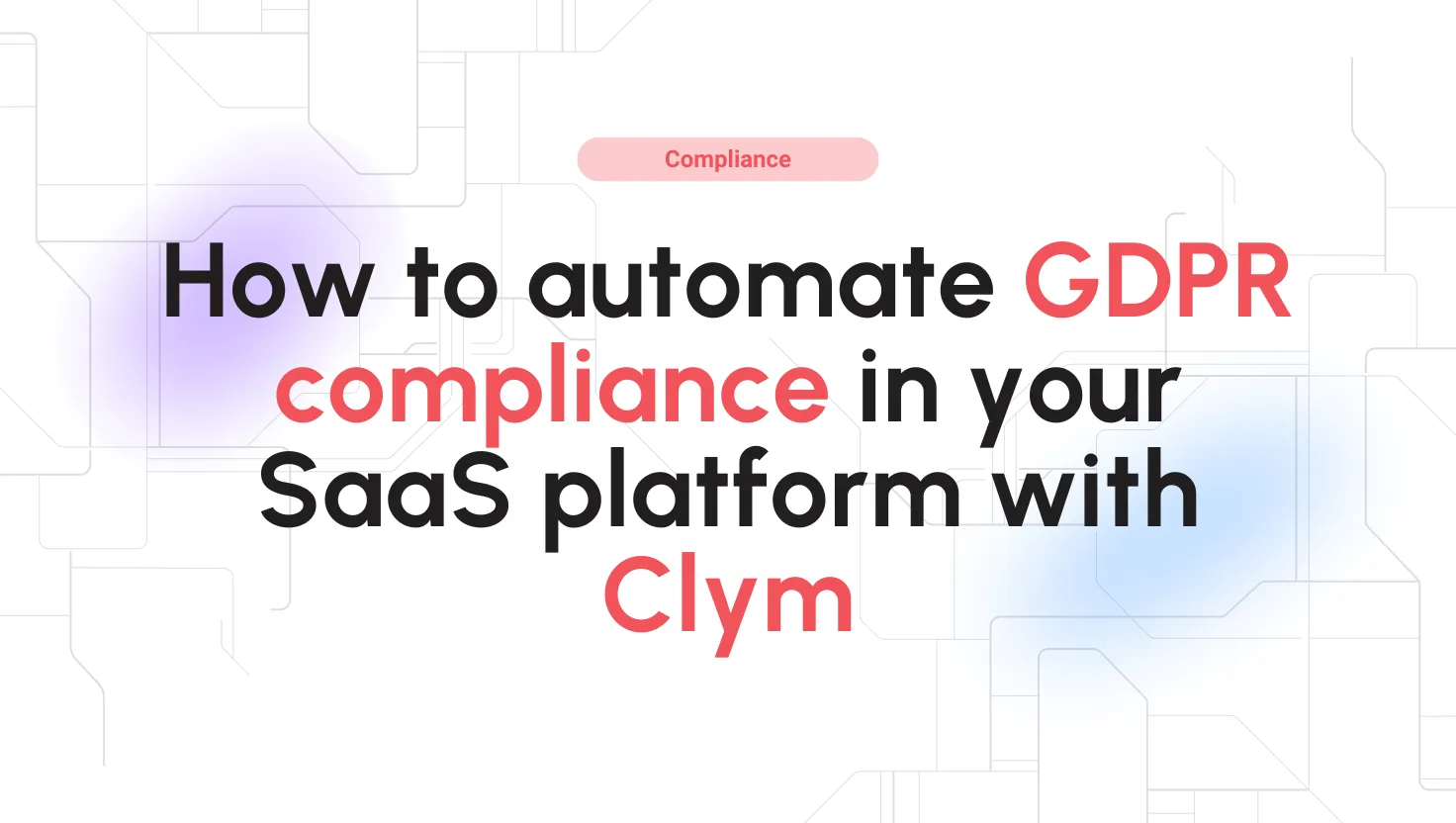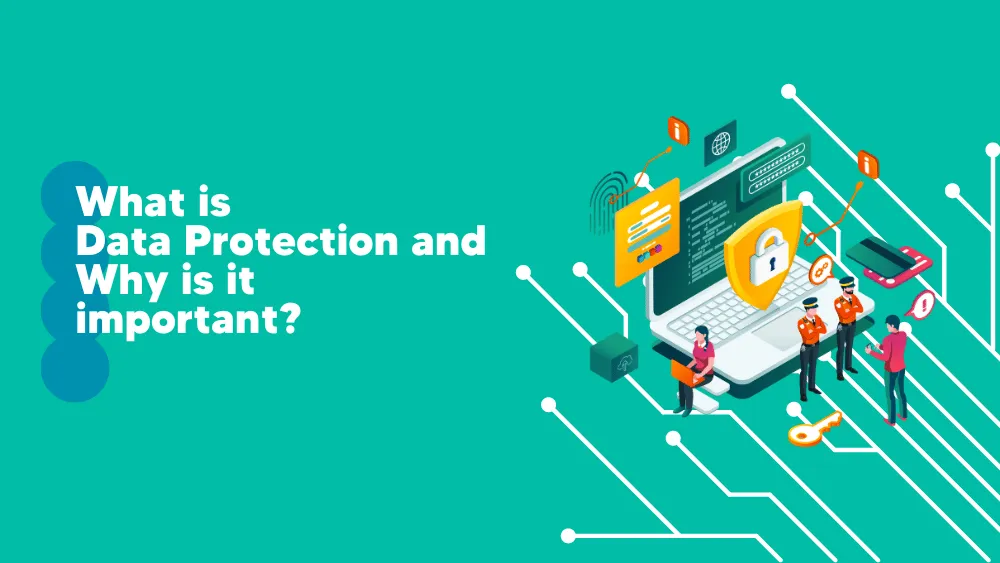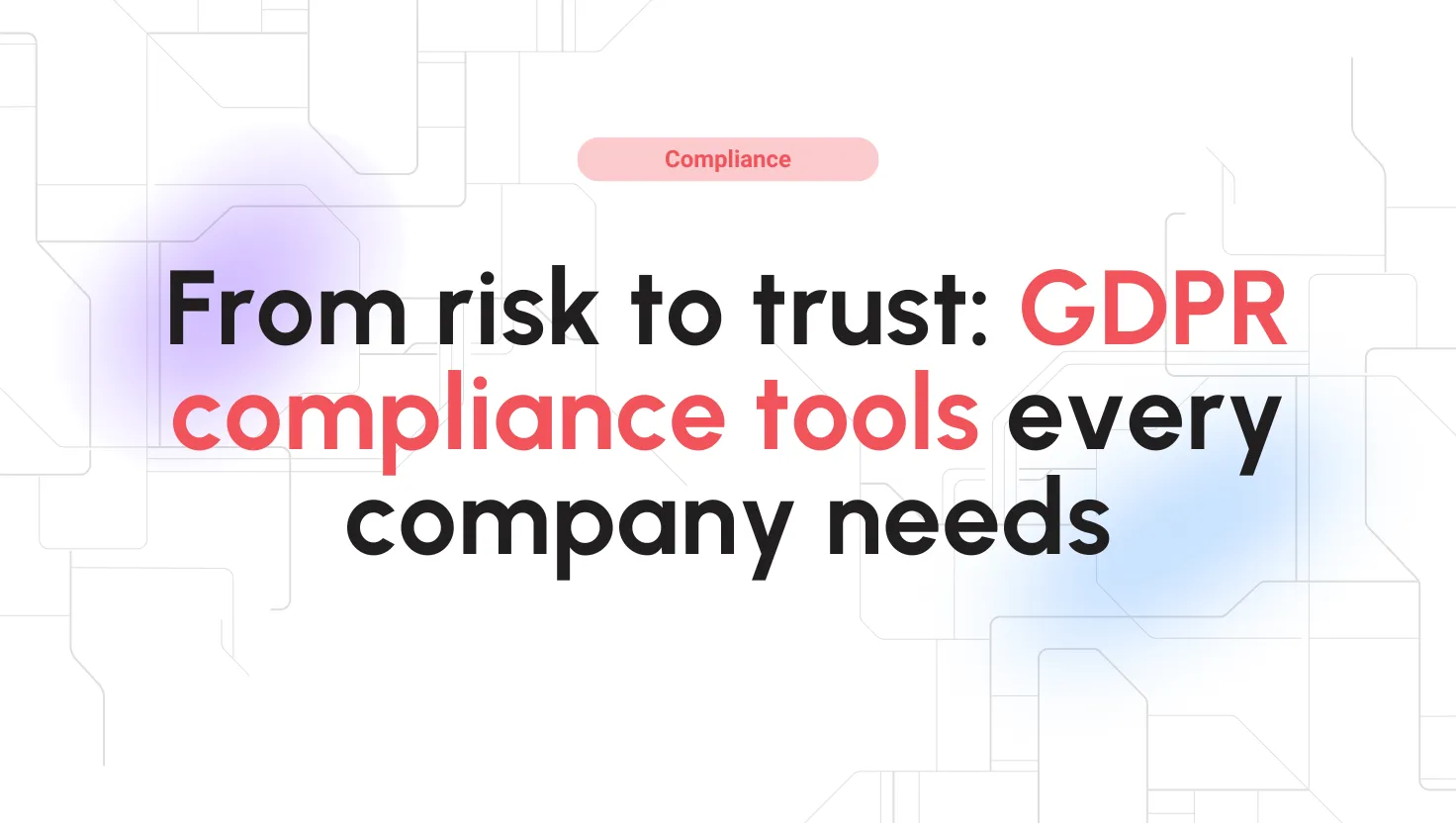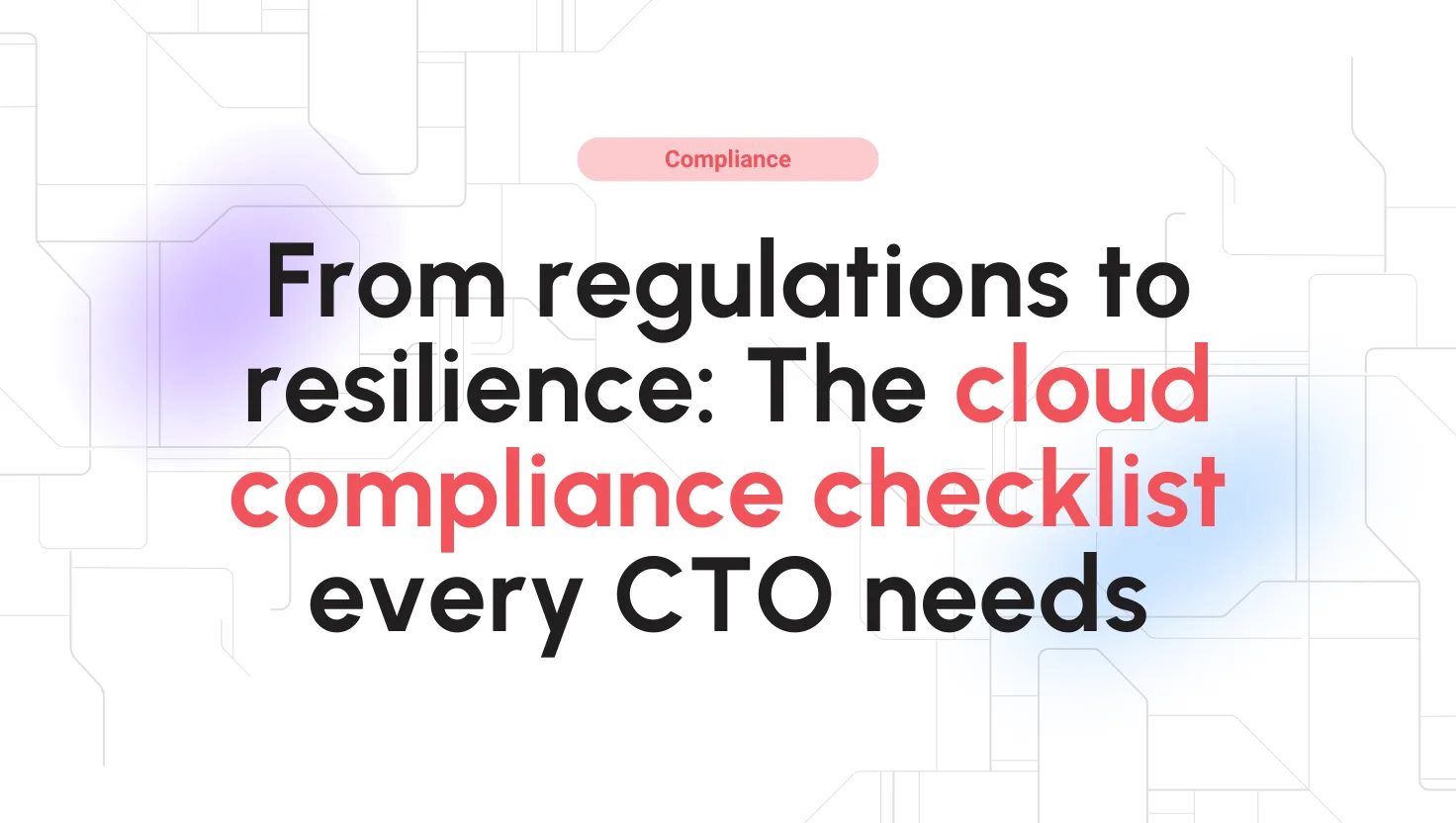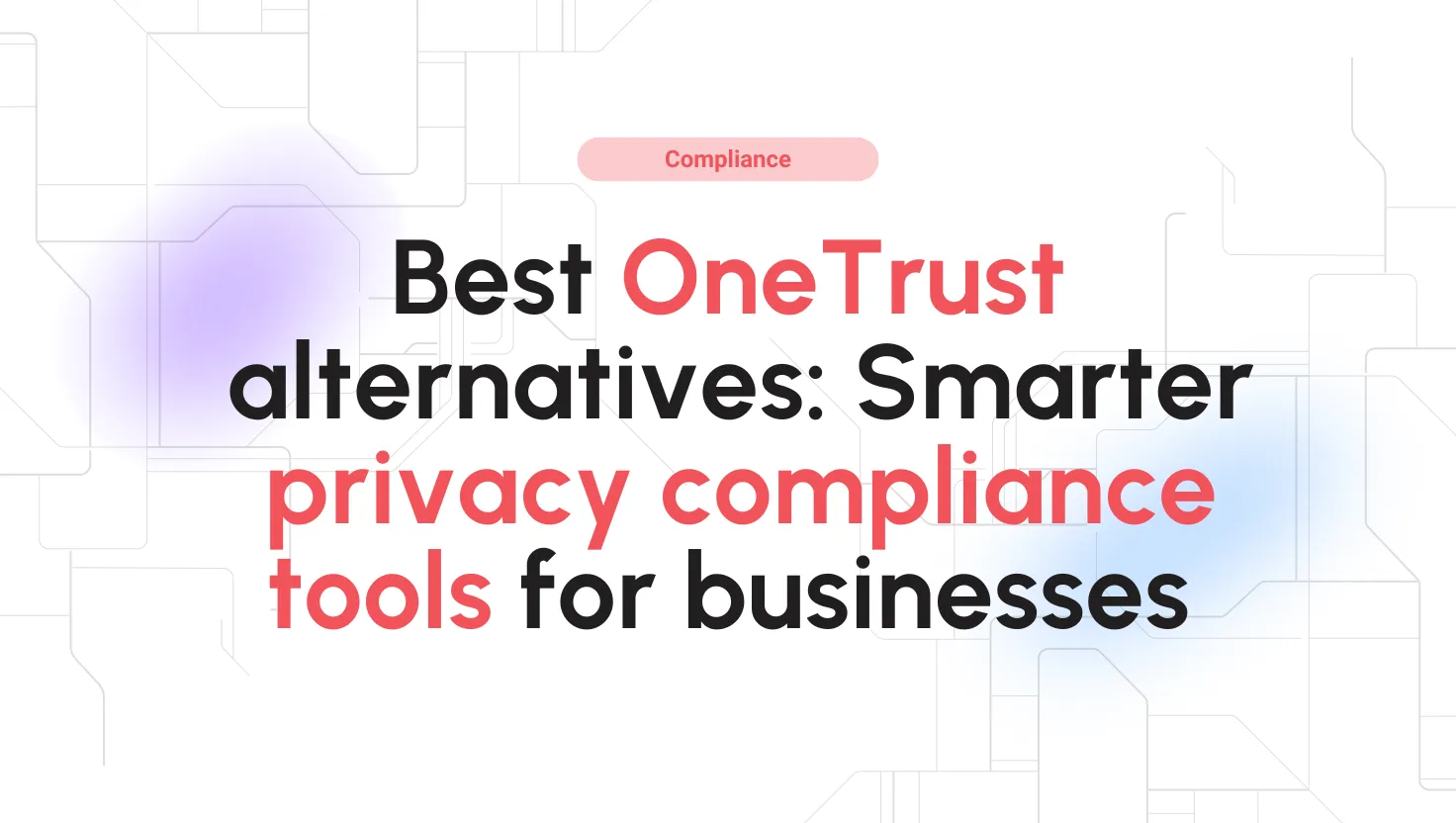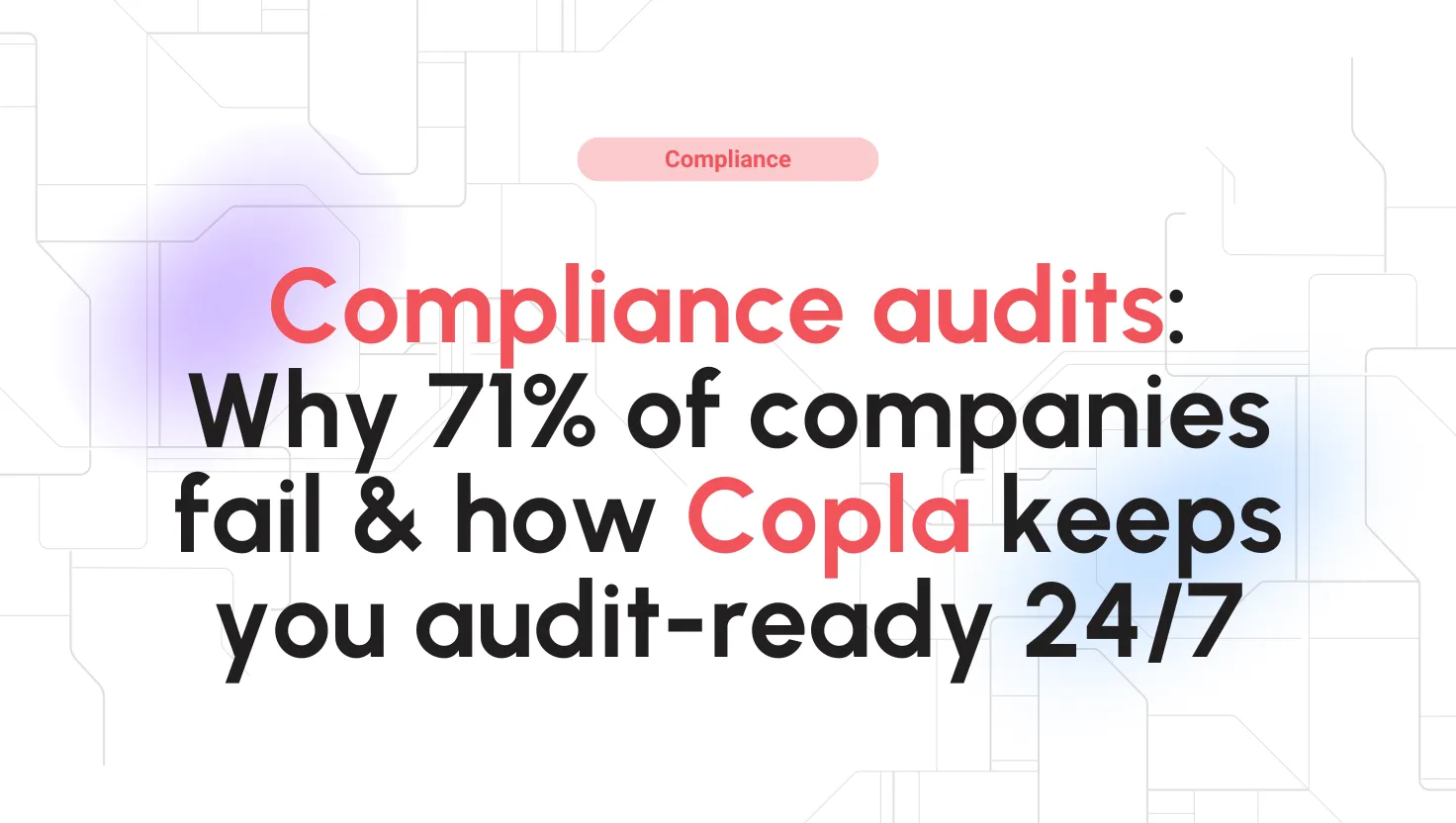Did you know that Meta (Facebook) was fined a record €1.2 billion in 2023 for violating GDPR compliance rules on EU–US data transfers? That massive penalty – the largest in GDPR history – demonstrates that regulators are taking user data protection lightly.
For SaaS companies, this isn’t just a headline about Big Tech; it’s a wake-up call. In fact, GDPR enforcement has ramped up worldwide – even ride-sharing companies and social networks have been hit with hundreds of millions in fines.
Key takeaways
- GDPR compliance is mandatory for any SaaS handling EU customers’ data, with heavy fines (up to €20 million or 4% of global revenue) for violations.
- Automating compliance tasks (like user consent logs, data requests, and reporting) saves time, reduces human error, and lowers the risk of penalties.
- Clym streamlines GDPR compliance – automatically managing cookie consents, Data Subject Access Requests (DSARs), and policy updates across 150+ global regulations.
In this article, I’ll break down what GDPR compliance really means for SaaS, why automating it is the smarter path forward, and how platforms like Clym facilitate compliance for your business.
What is automated GDPR compliance?
GDPR compliance means upholding users’ rights over their personal data – ensuring transparency, obtaining proper consent, and respecting requests to access or delete data.
Traditionally, achieving compliance required manual effort, including keeping consent logs, updating privacy policies manually, and addressing each user request individually. This manual approach quickly becomes overwhelming in SaaS, where user data pours in from around the world and small teams can’t realistically keep up.
Automated GDPR compliance uses software and workflows to handle these obligations with minimal human intervention.
In practice, automation replaces repetitive manual tasks with intelligent systems that:
- Collect and manage user consent automatically
- Handle Data Subject Access Requests (DSARs) at scale
- Keep policies up to date
- Generate compliance reports instantly
By automating these components, SaaS companies can ensure GDPR requirements are continuously met in the background, without grinding business to a halt for every new user or regulation change.
Why GDPR compliance matters for SaaS companies
If you operate a SaaS platform, you’re handling personal data every single day – which means GDPR (and laws like it) are always in play. Compliance isn’t just a legal box to check; it’s foundational to sustainable growth.
Here’s why it matters:- Avoid hefty fines and legal risks
- Reduce operational burden
- Gain customer trust and confidence
- Enable global expansion
In short, strong GDPR compliance protects your SaaS from harm – whether it’s multi-million-euro fines or the slow erosion of lost user trust. It also positions you to confidently grow your user base across borders, knowing privacy foundations are solid.
Key benefits of automating GDPR compliance
Automating your GDPR compliance isn’t just about doing the same tasks faster – it fundamentally improves your compliance program in several ways.
Here are the key benefits of using an automated solution in your SaaS:
Save time and reduce costs
Replacing repetitive human labor with software (for tasks like consent management and handling DSARs) means your team spends far fewer hours on compliance busywork. This efficiency reduces labor costs and allows your staff to focus on product growth rather than paperwork and administrative tasks.
Stay ahead of changing laws
Privacy regulations are constantly evolving. Automation ensures your platform stays up-to-date with GDPR rule changes and other international frameworks (like California’s CCPA or Brazil’s LGPD) without the need for constant manual re-coding. The tool updates consent flows and policy texts as laws change, so you remain compliant by default.
Scale effortlessly
Whether you have 100 users or 100 million, automated compliance systems can handle the load. As your SaaS grows, you won’t hit a wall – the software will manage consents, requests, and audits at any scale. This makes compliance elastic with your business, so expansion doesn’t introduce new privacy risks or operational bottlenecks.
Minimize compliance risks
Automation reduces the chance of human error that can lead to costly mistakes. By standardizing processes and maintaining detailed audit logs, it’s less likely that something falls through the cracks.
This helps you avoid breaches and penalties – nobody wants to be the next company in the headlines for a preventable privacy lapse (like Uber’s €290M GDPR fine due to lapses in data handling). Consistent, software-driven processes mean better accuracy and fewer “uh-oh” moments.
Boost customer trust
An automated approach often results in more transparent and prompt privacy practices – for example, instant fulfillment of data requests, or a clearly presented consent dashboard for users. These visible signs that you take data protection seriously help strengthen your brand. Users feel safer and more respected, which increases loyalty.
Challenges of GDPR compliance for SaaS
Even with automation, GDPR compliance isn’t a “set and forget” task. SaaS companies face a few ongoing challenges when it comes to maintaining compliance:
-
Complex data flows
Customer data in a SaaS environment often flows through numerous systems, third-party services, and integrations. Mapping where all that personal data goes – and ensuring every touchpoint is compliant – can be complicated.
If you use analytics tools, cloud storage, CRM systems, etc., they all need to play by GDPR rules. Tracking these moving parts requires careful design (and is exactly why having a centralized compliance platform helps).
-
Navigating overlapping regulations
GDPR might be one of the strictest privacy laws, but it’s not alone. Many SaaS companies must juggle multiple data protection laws simultaneously.
For instance, you might need to comply with GDPR for your EU users, CCPA/CPRA for California users, and other local laws for users in Asia or Latin America.
Each law has its nuances around consent, cookies, data export, and more. Keeping up with this patchwork of rules – and the updates each law undergoes – is a major challenge if you try to do it manually.
-
Maintaining a smooth user experience
You’re obligated to enforce things like consent prompts, age checks, and data access verifications – but you also don’t want to drive users away with clunky compliance hoops at every turn. Balancing legal requirements with a seamless UX is tricky.
For example, a cookie consent banner must gather necessary permissions, yet if it’s too intrusive or confusing, users might drop off. Designing compliance in a user-friendly way requires forethought (and often, the customization options that come with a good compliance tool).
These challenges are exactly why many SaaS companies turn to specialized compliance solutions instead of building everything from scratch.
How to automate GDPR compliance in your SaaS platform
Ready to get practical? Here’s a step-by-step approach to implement automated GDPR compliance in your SaaS:
-
Map your data flows
Start by auditing what personal data you collect and how it travels through your systems. Identify all databases, services, and third parties that touch user data. Document what data you have, where it’s stored, and who has access.
This data inventory is the foundation – you can’t protect what you don’t know you have. It will also help you configure any automation tool with the right inputs (e.g., which forms collect personal info, which systems receive it).
-
Implement automated consent management
Use a consent management platform or privacy software (such as Clym) to handle user consents. This involves deploying cookie consent banners and preference centers that automatically log users’ choices.
For example, when a new user signs up or visits your site, they should see a clear consent banner for cookies and tracking. With a tool, their preferences (accept/decline) are recorded and remembered.
Users should also have a way to adjust their consent later – say, via a “Privacy Settings” widget – without manual intervention from your team.
-
Set up DSAR automation
Configure a system for Data Subject Access Requests so that users can easily submit requests and receive responses automatically. This could be a web form or portal (often provided by compliance software) where users can ask to access their data, delete it, or correct it.
Behind the scenes, the tool should be able to pull the relevant data from your databases, assemble it, and (with your review) send it to the user or execute the deletion.
Automation here is crucial – GDPR gives you a tight timeframe (typically 30 days) to respond to requests, and doing it manually for each user is error-prone.
-
Centralize compliance reporting
Instead of maintaining dozens of spreadsheets or scattered records to prove you’re compliant, use a centralized dashboard. A good compliance platform will have a reporting module that continuously logs consents given, policies presented, DSARs handled, etc.
All your key metrics and records live in one place. When it’s time for an internal audit or a regulator knocks on your door, you can generate audit-ready reports in seconds.
This not only saves time but also ensures nothing important gets lost.
-
Enable automatic policy updates
Regulations change, and so do your own data practices. Ensure you have a mechanism to keep your privacy policy, terms of service, and cookie policy up-to-date automatically.
Many compliance tools will update template language as laws evolve (for instance, if a new cookie rule comes into effect in the EU, the tool can update your banner text accordingly).
Likewise, if you add a new feature that collects data, you can update your policies in the platform and publish the changes everywhere instantly. Keeping policies current and easily accessible is a GDPR requirement, and automation makes this trivial.
By following these steps, you’ll establish a solid framework for GDPR compliance that largely runs on autopilot. At this point, the key is choosing the right GDPR compliance tool to support these steps.
GDPR compliance automation with Clym
There are several privacy compliance tools on the market, but if you’re a growing SaaS business, Clym stands out as a complex solution to automate GDPR compliance (as well as other data laws).
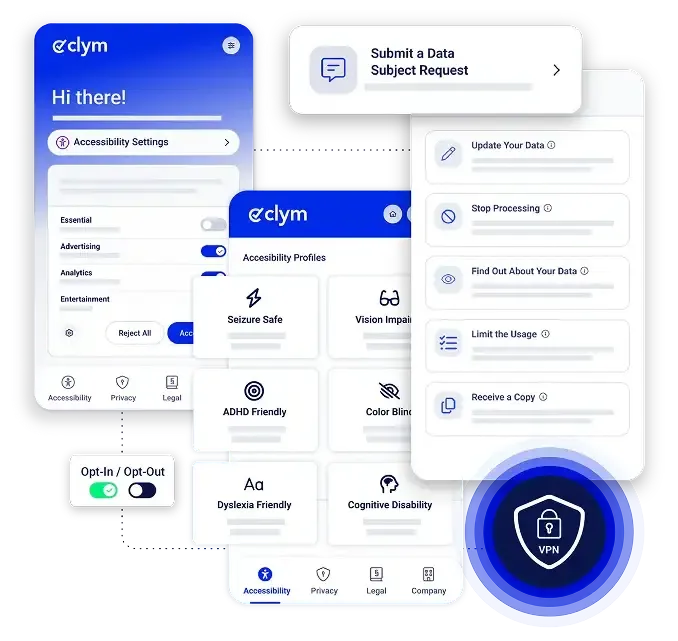
-
Unified global coverage
Clym comes with ReadyCompliance™ – a set of pre-configured settings for 150+ global privacy regulations out of the box. That means with one integration, you’re not only set for GDPR, but also for laws like CCPA/CPRA, LGPD, and more.
The platform automatically detects a user’s location and applies the correct legal requirements (showing the right consent dialog, language, etc., for that region).
You don’t have to manually update for each new law – it’s handled for you.
Stop chasing regulations, let Clym handle them!
-
Quick deployment
Implementing Clym is fast. In fact, setup typically takes less than 30 minutes – you just add a script to your site or app, configure your preferences in Clym’s dashboard, and you’re up and running.
There’s no need for a lengthy development project or specialist privacy engineers to get basic compliance in place.
-
Enterprise-grade scalability
Clym is built to handle websites and apps from 1,000 to 1+ billion pageviews with minimal performance impact. Whether you’re a startup or an enterprise SaaS, the platform won’t slow you down.
Its widget loads asynchronously and only fully activates when needed, so it won’t bog down your page loads or user experience. This scalability is crucial for SaaS companies that expect rapid growth or high traffic spikes.
-
Advanced features
With Clym, you get a suite of compliance tools in one. It manages cookie consent banners (with granular preferences), provides a user-facing privacy center where people can manage their data and submit DSARs, and even includes features like legal policy hosting and versioning.
All consent records and user requests are tracked in the system. Clym also supports multi-language content, so you can display your compliance notices in over 20 languages automatically – great for serving EU users in their native language.
Everything is centralized, which saves you from juggling multiple vendors or home-grown solutions.
-
SaaS-focused customization
Because Clym works with a simple integration, it’s technology-agnostic – whether your SaaS runs on a modern JS framework or a traditional web stack, you can integrate it.
It’s also highly customizable: you can tailor the look and feel of consent banners and widgets to match your branding, ensuring the compliance elements blend into your UI. This helps maintain a good user experience while still being transparent and legal.
In short, Clym offers a one-stop shop for automating privacy compliance. Instead of piecing together a consent tool from one provider, a DSAR portal from another, and custom code for policy updates, you get everything under one roof.
That simplicity and depth of coverage make Clym especially appealing to SaaS companies that have limited compliance manpower but high aspirations to grow globally (and safely).
Use cases of Clym
To make this more concrete, let’s look at how different types of SaaS companies can leverage Clym for GDPR compliance:
-
SaaS startups expanding to the EU
Imagine a small SaaS startup about to launch in Europe. They have no dedicated privacy team. By deploying Clym, they can get compliant within hours instead of weeks.
The platform automatically adds cookie consent banners and privacy notices to its app, and sets up a self-service portal for user data requests.
This way, the startup can enter the EU market confidently, knowing they won’t accidentally violate GDPR on day one.
-
International SaaS providers
For larger SaaS companies serving a global user base, Clym eliminates the need for multiple point solutions. Rather than using one vendor for EU GDPR, another for California CCPA, and custom code for Brazil, they integrate one platform that covers all jurisdictions.
For example, an international SaaS can use Clym’s single dashboard to manage compliance with GDPR, CCPA, Canada’s PIPEDA, and over 150 laws – all through a unified interface.
This not only reduces cost (one integration instead of many) but also ensures nothing falls through the cracks when laws overlap.
-
Regulated industries
SaaS products in finance, healthcare, or e-commerce have additional compliance pressures (like PCI DSS for payments or HIPAA for health data). Clym helps here by providing strict data consent and access controls that satisfy GDPR and complement industry-specific rules.
For instance, a health-tech SaaS can use Clym to manage user consents for data sharing in a way that respects GDPR’s privacy by design, while also demonstrating compliance with healthcare data regulations.
The platform’s audit logs and granular consent tracking create an evidence trail that regulators in any industry love to see.
-
Cross-functional teams of all sizes
Clym’s platform is designed so that everyone in your organization can stay on the same page. Your marketing team ensures cookie banners and tracking consents are handled properly (so analytics are GDPR-compliant).
Your IT or developers have an easy script to maintain instead of building new tools from scratch. Your compliance or legal officer can pull reports and adjust settings without writing code.
Essentially, Clym gives a common toolset so that from engineering to marketing to legal, all teams collaborate through one system.
This is especially useful as companies grow – you might not have had a compliance officer at first, but as you add one, they can plug right into the existing Clym setup.
The future of GDPR compliance in SaaS
Complying with data privacy laws is becoming increasingly tied to AI and automation. Future tools will not just react but predict and prevent risks in real time, flagging issues before they become violations.
By 2025, nearly 80% of countries will have data protection laws, pushing toward global harmonization. For SaaS, privacy compliance will be a baseline requirement for doing business anywhere.
On the business side, compliance is shifting from a burden to a competitive advantage. Privacy and security are becoming as important to users as features or price, and SaaS platforms that prove strong data protection will win trust and market share.
In short, the future of GDPR compliance is AI-driven, real-time, and user-centric. Far from being a blocker, it will stand as a quality standard and trust signal for SaaS companies that embrace it early.
Final verdict on GDPR compliance
GDPR compliance might sound daunting, especially for resource-strapped SaaS companies, but the key takeaway is this: it doesn’t have to be difficult if you work smarter, not harder.
By automating the heavy aspects of compliance, you can protect your users’ data rights and stay on the right side of the law without draining your team’s time and energy.
Think of automating GDPR compliance as both a shield and a springboard. It’s a shield that guards your platform against fines, legal battles, and security mishaps.
At the same time, it’s a springboard for growth – freeing you to scale into new regions and innovate, confident that a solid privacy foundation is in place.
Ultimately, compliance isn’t just about staying out of trouble; it’s about building trust. Users who see clear consent options, transparent policies, and respect for their data will repay you with loyalty.
Ready to simplify GDPR compliance and turn it into an advantage for your SaaS?
By investing a bit of time now to set up automated compliance, you’re investing in the stability, credibility, and scalability of your business for years to come.

